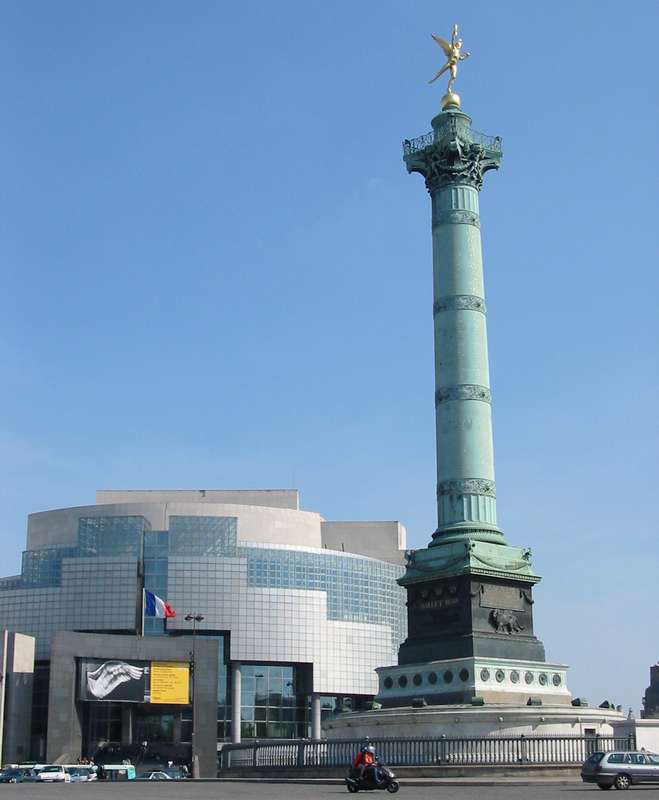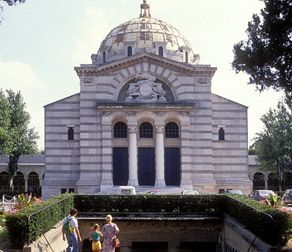The 11th arrondissement is home to both the Bastille and Rue du Oberkampf. As the name implies, the Bastille area was the location of the Storming of Bastille which kick-started the French Revolution on July 14, 1789.
Hundreds of years later, this area of the city is still full of spirit, just not the revolutionary kind.
Three metro lines converge at Bastille making this area a transport hub and constant center of action.
The opening of the glassy Opéra Bastille in 1989, 200 years after the Revolution, was supposed to breathe new cultural life into the area, but the party atmosphere has yet to give way to galleries and string quartets.

The district teems with bars, restaurant, clubs and the all important late-night food stands to keep the hordes well fed and watered throughout the evening.
The Bastille is popular with a young, trendy crowd, who eat on rue de la Roquette and then hop from bar to bar along rue de Lappe. Young designer boutiques on rue J.P Timbaud and the clubs and lounges on nearby Rue du Faubourg Saint-Antoine attract a more dressed up clientele.
And then there's Oberkampf, another hot nightspot.
It has always been thought of as a working class area but recently, artistic souls have started to drift towards Oberkampf from other parts of the city has put the area on the nightlife map.
North of the neighborhood on rue Oberkampf and rue Ménilmontant, an eclectic mix of bars provide the perfect antidote to the chains you find elsewhere in the city. Place de la Nation, farther south, was the setting for Louis XIV’s wedding in 1660 and the site of revolutionary fervor in 1830 and 1848.
Offering an eclectic mix of bars and cafés to the willing reveler, Oberkampf is slightly edgier than neighboring Bastille, as reflected in the graffiti and more alternative crowd.
Don’t come with a particular plan in mind, just go with the crowd, and if you get the impression that everyone knows each other, it’s because they do.
In keeping with the general youthful vibe, the Bastille and Oberkampf are good places to look for budget accommodation. While the area is generally safe, don't wander around alone late at night and be especially vigilant around Gare de Lyon.
Tourists don't often make it out to this part of the city but it is a lovely place for a wander if you want to see a different side of Paris. As well as the hip bars and boutiques there are some sights worth seeing.
If you get tired of the noise and pace of the city, a walk along Canal St Martin or in Parc Buttes-Chaumont will cure you of the claustrophobia of the city center and the Cimetière du Père Lachaise is good for celebrity spotting with a twist.

Cimetière du Père Lachaise
This is the world's most visited and the Paris's largest cemetery. Named after a confessor of Louis XIV, Père Lachaise was opened in 1804 and now has about 800,000 permanent tenants. The most star-studded cemetery ever, it boasts Chopin, Molière, Proust, Colette, Oscar Wilde and Jim Morrison amongst its guests.
Parc Buttes-Chaumont
A welcome relief from other formal gardens found in the center of Paris, Buttes Chaumont is about as wild as it gets in a city center. Great for a picnic or to let kids run free, without worrying about "Keep of the Grass" signs. Check out the Parks section of our guide for more information.
Bois de Vincennes
Paris's eastern "lung", the Bois de Vincennes is what Parisians consider countryside. With a château, a dungeon, and a tropical garden it is worth the journey from the city center. Kids will love the 15-hectare zoo which is home to over 600 animals.